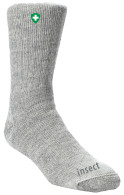
In 2002, shortly after establishing Insect Shield® LLC, Greensboro, N.C., to produce a method of bonding a proprietary insect repellent to consumer apparel, company leaders proposed a pilot test. Cases of Lyme disease, a serious tick-borne illness, kept increasing every year at West Point Military Academy, so Insect Shield used its new process on cadet uniforms. Lyme disease cases dropped to zero. Since then, the company’s U.S. Environmental Protection Agency-registered insect repellent has been bonded to millions of garments for outdoor activity, golf, hunting, fishing and equestrian recreation. The technology converts clothing and gear into long-lasting protection for the entire family.
Insect Shield repellent wear has entered the working world as well. Workers exposed to insects carrying malaria, Lyme disease, West Nile disease, dengue fever and many additional serious diseases include people in the military, public safety, forestry, mining, oil and gas exploration, agriculture, landscaping, disaster relief and other industries. Insect Shield provides effective, invisible and odorless technology that allows garments to repel mosquitoes, ticks, ants, flies, chiggers and midges (no-see-ums) for up to 70 launderings. Researchers at the University of North Carolina Gillings School of Global Public Health reported the incidence of tick attachments was reduced 99 percent among workers wearing Insect Shield apparel. The technology can be combined with options such as sun protection, high visibility and fire resistance to ensure worker health and safety.

 TEXTILES.ORG
TEXTILES.ORG


